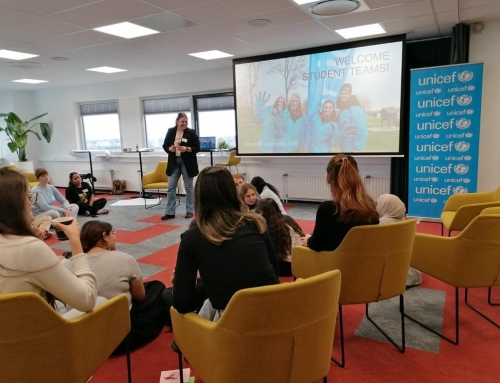Holistic education; is a relatively new movement in education that seeks to engage all aspects of the learner, including mind, body and spirit. (Wikipedia, n.d.)
The holistic approach is based on allowing children to work at their own pace, instead of maintaining that all children should work at the same level or speed. The holistic approach takes a creative outlook on the education system.
The aim of holistic education is to call forth from people an intrinsic reference for life and a passionate love of learning. It gives attention to experiential learning, and places significance on relationships and primary human values within the learning environment. (Martin 2002)
We can take the example of Montessori education. This is a method of education that is based on self- directed activity, hands- on learning and collaborative play. Children can learn through their own experience and at their own pace. Not all children, especially during primary education are able to concentrate through traditional teaching. Traditional method of teaching is when a teacher directs students to learn through memorization and recitation techniques. (Sunal et al 1994) Children have the flexibility and creativity to learn. For example, when learning mathematics, instead of learning + and – in exercise books they will learn through play by beads or other activities.
International schools are increasingly providing holistic education through the opportunity to nurture every aspect of a child’s development. International schools encourage students to continue learning within sports, art and the outdoors. Their value is viewing education as a dynamic process of becoming the best person you can be. (Study International Staff, 2018). By growing up around diverse nationalities, languages and cultures they have an international perspective and knowledge of both academically, creatively and socially.
I myself, have experienced the curriculum at the international school and can support that they truly do use a holistic approach. International schools are often equipped with many facilities which allow children to explore and broaden their knowledge. International schools motivate children to take part in many different sporting activities and have great creativity classrooms which allow children to develop. In middle school I took part in these after school sport activities and it helped me feel part of group and motivated me to stand on the sports field every day. I also enjoyed learning through different activites rather than text- book knowledge.
We can also link holistic education to Maslow’s pyramid of needs. Holistic education is aimed to help students to become the most they can be. Maslow referred to this as “self- actualization”. Education with a holistic perspective is concerned with the development of every person’s intellectual, emotional, social, physical, artistic, creative and spiritual potentials. It seeks to engage students in the teaching/learning process and encourages personal and collective responsibility. (Wikipedia, n.d.)
Maslow (1943) stated that people are motivated to achieve certain needs and that some needs take precedence over others. Self-actualization needs refer to the realization of a person’s potential, self-fulfilment, seeking personal growth and peak experiences. Maslow (1943) describes this level as the desire to accomplish everything that one can, to become the most that one can be.

maslow’s hierarchy of needs
I can see how the educational system can play a major part in the first four stages of the pyramid. This in turn helping children to meet their self- actualization needs which supports them to strive in life. When the educational system cannot meet this, I believe this will have a great impact on a child’s development.
The current situation of ‘nieuwkomersgroepen’ is not allowing these basic needs to be fulfilled. Children often do not feel safe within the classroom and are not feeling part of a group. When this is not done within the education system, children seek this belonging elsewhere in a more antisocial context. Kaplan and Johnson (1992) noted that when students who are failing don’t feel accepted in the mainstream, they tend to seek their “own sense of belongingness” in a context that is more antisocial. In other words, it is better to belong to an antisocial group than to no group at all. Burnett and Walz (1994) stated that gangs become “popular” because they provide students with a sense of belonging or acceptance unavailable anywhere else in their lives.
When we look at the curriculum in the Netherlands, many educational systems are still using the traditional teaching method. This surprises me, all this research indicates that there are more positive approaches to motivate and engage children and yet educational systems are not applying this within their curriculum.
Why? I believe this is due to the educational system still working in a system world rather than a life world.
Life world; Habermans believes that life world allows human to feel emotional value and freedom in regarding their own choices in everyday life.
Life world is recognized within Society 3.0. Society 3.0 is about interdependence, interconnectivity, individualism, and co-creation (Scholardarity, 2017). Many organizations, societies, businesses and communities live in a system world. A system world is where procedures, rules and regulations are implemented and followed. Society implements this to be able to control the outcome of situations and to create a structure. I believe this is the same within the educational curriculum. Education systems have the aim that students receive high grades in subjects such as Mathematics, Science and Dutch, this has a positive image for the school.
The sociologist explained how the two worlds interconnect and how it affects our human behaviour within society. Habermans believes that system world affects human behaviour in a negative way, making us adapt to rules and regulations and setting aside our personal believes and values. I agree with Haberman as I can conclude how it has a negative effect within the education system as it does not accompany the different needs of the students.
If the education systems would look at the curriculum they are giving and change this by using a more holistic approach I believe the educational development of students would have a much more positive impact. Especially within the ‘nieuwkomersgroepen’ as third culture kids often have many different ways of learning. I want to link back to culturally responsive teaching as this can be a method educational system use, within their ‘niewkomersgroepen’, to make the transition of changing their approach.
References
Holistic approach (n.d.) Retrieved 27 April
https://en.wikipedia.org/wiki/Holistic_education
Life World (n.d.) Retrieved 27 April
https://en.wikipedia.org/wiki/Lifeworld
Maslow’s Hierarchy of needs (1970) Retrieved 27 April
https://www.simplypsychology.org/maslow.html
Holistic education (n.d.) Retrieved 27 April
https://www.teach-nology.com/teachers/methods/holistic/
Montessori education (n.d.) Retrieved 27 April





